COMET IMAGE GALLERY (comets 1-400)
page 2
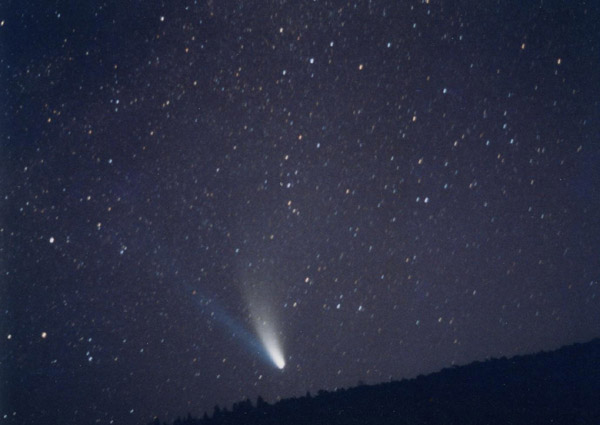
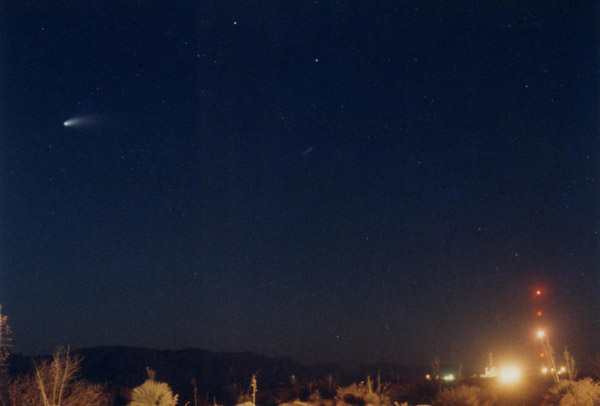
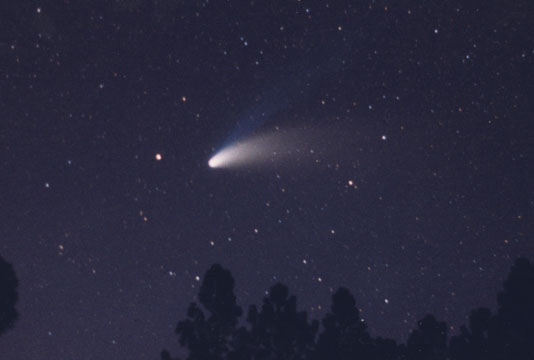
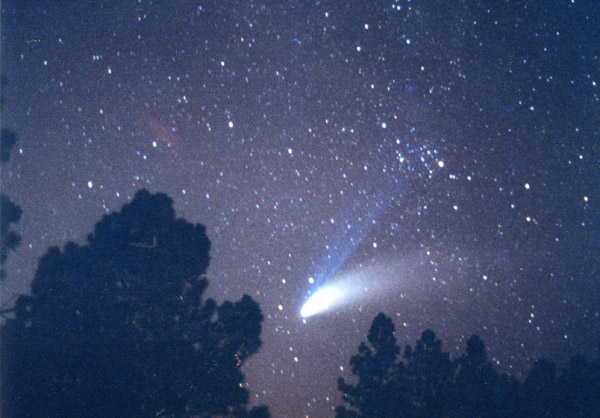
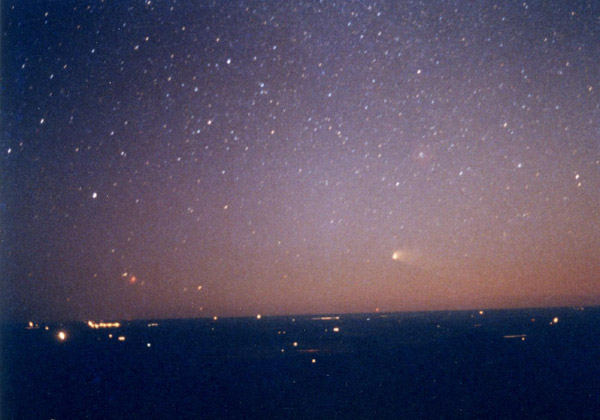
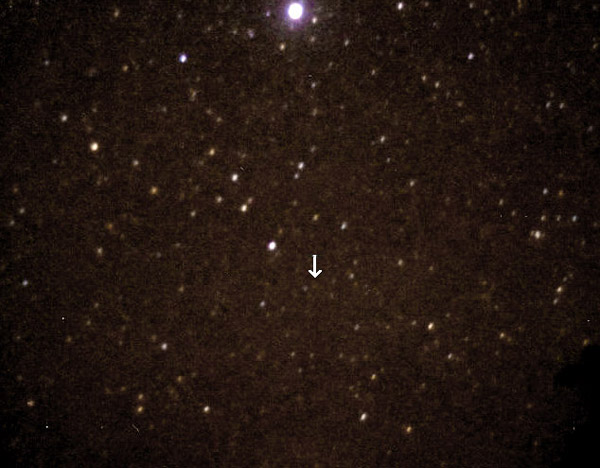

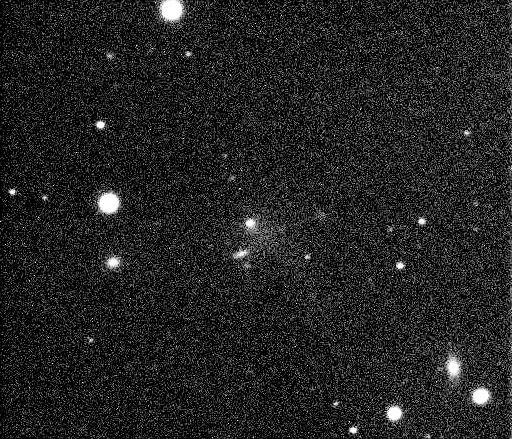
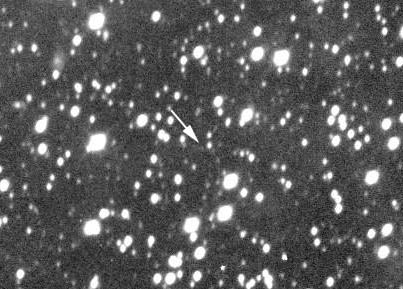
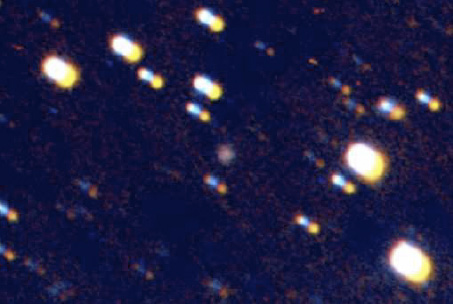
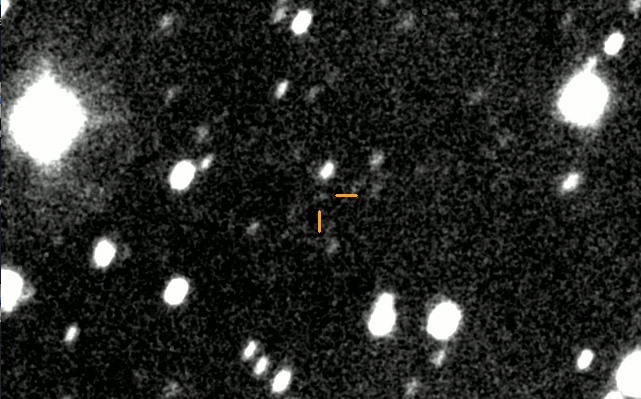
|
COMET IMAGE GALLERY (comets 1-400)
page 2 |
|||||||||||||||||||||||||||
| All the photographs and images on this page are of Comet Hale-Bopp C/1995 O1 (no. 199), an object which for obvious reasons has had a significant impact on my life. Unless otherwise specified, the photographs were taken from, or near, my residence near Cloudcroft, New Mexico -- and thus from close to the Earthrise dark-sky site. | |||||||||||||||||||||||||||
 |
|||||||||||||||||||||||||||
 |
|||||||||||||||||||||||||||
| Left: morning sky, March 21, 1997. Right: Evening sky, March 24, 1997, from the launch complex at White Sands Missile Range just prior to the launch of a sounding rocket carrying an ultraviolet telescope to observe the comet. The desert landscape is lit up by the full moon. | |||||||||||||||||||||||||||
 |
|||||||||||||||||||||||||||
 |
|||||||||||||||||||||||||||
| Left: April 1, 1997 (the date of perihelion). Right: April 9, 1997. | |||||||||||||||||||||||||||
 |
|||||||||||||||||||||||||||
 |
|||||||||||||||||||||||||||
| Left: June 9, 1997, from Siding Spring Observatory, New South Wales. Right: my last photograph of Hale-Bopp, taken May 24, 1998, from near Narrabri, New South Wales. The bright star at the top is Canopus. | |||||||||||||||||||||||||||
 |
|||||||||||||||||||||||||||
| Central coma of Hale-Bopp, showing some of the "ripple" structure that was prevalent when the comet was brightest. Photograph by Alireza Mehrani, Adib Astronomical Society, Esfahan, Iran. Used with permission. | |||||||||||||||||||||||||||
 |
|||||||||||||||||||||||||||
 |
|||||||||||||||||||||||||||
| Two more recent images of Hale-Bopp, which is now deep in the southern sky. Left: CCD image taken January 8, 2005, by Andrew Rivkin and Richard Binzel of MIT, using the 6.5-meter Clay Telescope at the Magellan Observatory in Las Campanas, Chile. The comet was then located 20.9 AU from the sun (almost 2 AU beyond the orbit of Uranus) and 21.2 AU from the earth, and still shows a distinct tail. Used with permission. Right: CCD image taken from Western Australia by Japanese amateur astronomer Mitsunori Tsumura on January 29, 2006. The comet was then located 22.8 AU from the sun and 23.1 AU from Earth. Used with permission. | |||||||||||||||||||||||||||
 |
|||||||||||||||||||||||||||
| An even more recent image of Comet Hale-Bopp, taken on October 21, 2007 with the 2.3-meter Australian National University telescope at Siding Spring Observatory in New South Wales. At that time the comet was located only 3.5 degrees from the south celestial pole and 25.8 AU from the sun; even at that large distance it continues to exhibit a coma. Image supplied courtesy of Krisztian Sarneczky of Szeged University in Hungary, who is one of the co-authors of a recent paper describing these observations of Hale-Bopp. | |||||||||||||||||||||||||||
 |
|||||||||||||||||||||||||||
| The latest image of Hale-Bopp, obtained December 4, 2010, from the European Southern Observatory in Chile. The 23rd-magnitude comet was located 30.7 AU from the sun (about half an AU beyond the orbit of Neptune) and although it isn't conclusive, it stills exhibits some circumstantial evidence for weak coma activity. Like the above image, this one was provided courtesy of Krisztian Sarnecky of Szeged University in Hungary; the observations are described in a recent paper. | |||||||||||||||||||||||||||
| Previous 1 2 3 4 5 Next | |||||||||||||||||||||||||||
| Return to main comets page | |||||||||||||||||||||||||||